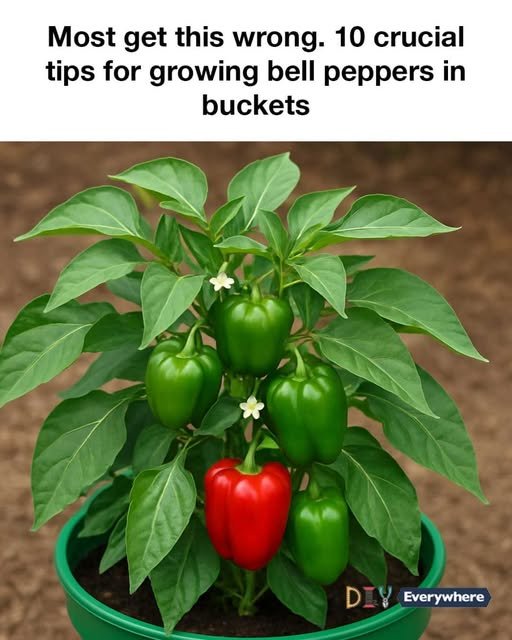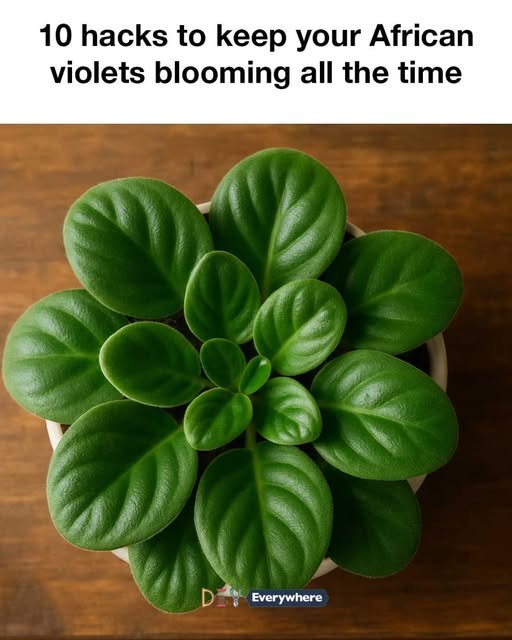Growing bell peppers in buckets is a great way to enjoy fresh, homegrown vegetables—even if you’re short on garden space. Whether you’re an apartment dweller with a balcony or simply aiming to make the most of your patio or deck, bucket gardening offers a convenient and productive option. However, growing bell peppers in containers requires some attention to detail to avoid common pitfalls that can hinder plant health and yield.
In this article, we’ll explore 11 vital tips to help you successfully grow bell peppers in buckets. From choosing the right variety to overwintering your plants, these best practices will help you cultivate strong, productive bell pepper plants that thrive in containers.
1. Choosing the Right Bell Pepper Variety for Containers
When growing bell peppers in buckets, opt for compact or dwarf varieties that adapt well to limited space. Look for cultivars such as ‘California Wonder’, ‘Mini Belle’, or ‘Baby Belle’—these types are known for their manageable size and reliable yields in containers.
While most bell peppers grow well in buckets with the right care, selecting smaller-fruited or bushier varieties will typically give better results in confined environments.
2. Selecting the Ideal Bucket Size
Bell pepper plants require adequate space for root development. Use a 5-gallon bucket for each plant, with a minimum of 12 inches in depth and diameter. This allows roots to spread and supports the plant’s full growth cycle.
Avoid using undersized containers, as they can lead to stunted growth and reduced fruiting. Larger containers also help regulate soil moisture and temperature, which is beneficial for bell peppers.
3. Ensuring Proper Drainage
To prevent waterlogged roots and promote healthy growth, ensure your bucket has proper drainage. Drill at least 5–6 holes, each about ¼ inch in diameter, in the bottom of the bucket.
Optionally, add a thin layer of gravel or small rocks before filling with soil to enhance drainage and prevent soil compaction at the base.
4. Using High-Quality Potting Mix
Bell peppers thrive in well-draining, nutrient-rich soil. Use a high-quality potting mix specifically designed for containers. A good mix should include components like peat moss or coconut coir for moisture retention, and perlite or vermiculite to improve aeration.
Avoid garden soil, which tends to compact in containers and may carry pests or diseases that can harm your plants.
5. Providing Adequate Sunlight
Bell peppers need 6–8 hours of direct sunlight daily for healthy growth and fruit development. Place your buckets in a sunny, south-facing location like a balcony, porch, or patio.
If you’re growing indoors or in areas with limited sun, consider using grow lights to supplement light and keep your plants productive.
6. Watering Bell Peppers Consistently
Bell peppers prefer evenly moist soil, not soggy or bone-dry. Water when the top inch of soil feels dry, and adjust your schedule depending on temperature and weather conditions. In hot weather, you may need to water daily.
Consistent moisture is especially important once the plants begin flowering and setting fruit. A self-watering container or drip irrigation system can help maintain optimal moisture levels.
7. Fertilizing for Healthy Growth and Fruit Set
Fertilize your bell pepper plants every 2–3 weeks with a balanced water-soluble fertilizer (e.g., 5-10-10 or 10-10-10). Alternatively, mix a slow-release fertilizer into the soil at planting.
Bell peppers benefit from extra phosphorus and potassium during the flowering and fruiting stages. Avoid over-fertilizing with nitrogen, which can cause excessive leaf growth at the expense of fruit production.
8. Managing Pests and Diseases in Container Bell Peppers
Even in containers, bell peppers can fall victim to pests such as aphids, spider mites, and whiteflies. Check leaves regularly for signs of trouble, especially on the undersides, and use neem oil or insecticidal soap as needed.
Common diseases include bacterial leaf spot and powdery mildew. Provide good air circulation, avoid overhead watering, and remove any diseased leaves promptly to keep your plants healthy.
9. Supporting Bell Pepper Plants
As bell peppers mature, their fruits can become heavy and cause stems to bend or break. Use plant stakes, tomato cages, or trellises to provide support.
Insert supports at planting time to avoid damaging roots later on. Use soft ties to secure stems and keep plants upright as they grow.
10. Pruning and Harvesting Bell Peppers
Light pruning can help increase airflow and sunlight exposure to lower branches, improving overall plant health. Remove any yellowing or damaged leaves and trim crowded growth.
Harvest bell peppers once they reach full size and desired color—whether green, red, yellow, or orange depending on the variety. Use scissors or pruners to avoid damaging the plant. Regular harvesting encourages continued production.
11. Overwintering Bell Peppers in Buckets
Bell peppers are perennials in warm climates and can be overwintered indoors in cooler regions. Before the first frost, prune the plant by about one-third and move it to a sunny indoor space.
Cut back on watering and stop fertilizing during winter dormancy. With proper care, your plant can survive the winter and be transplanted back outside in spring for another productive season.



